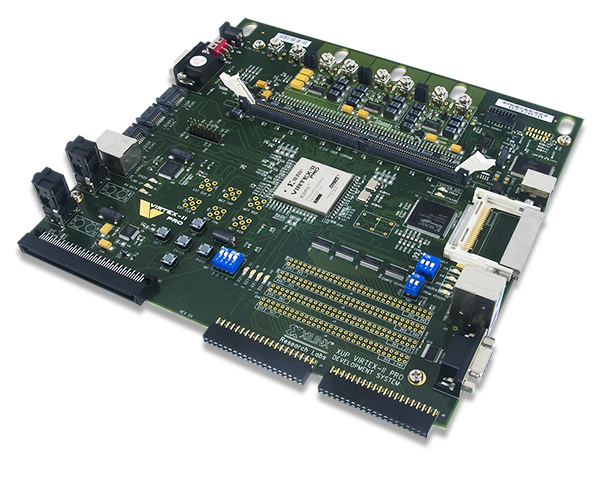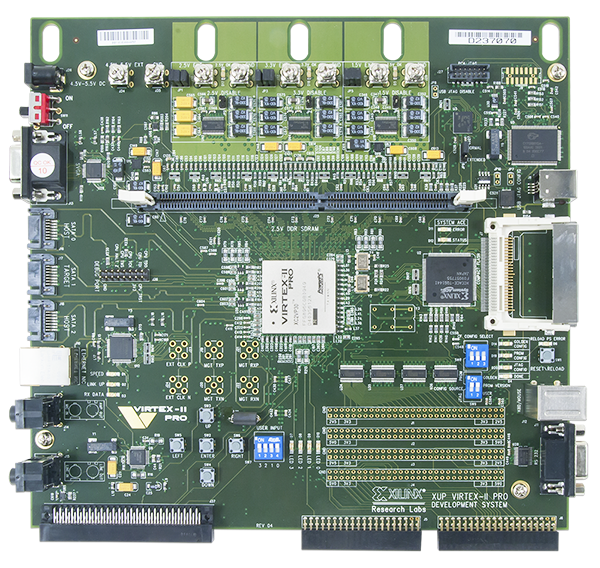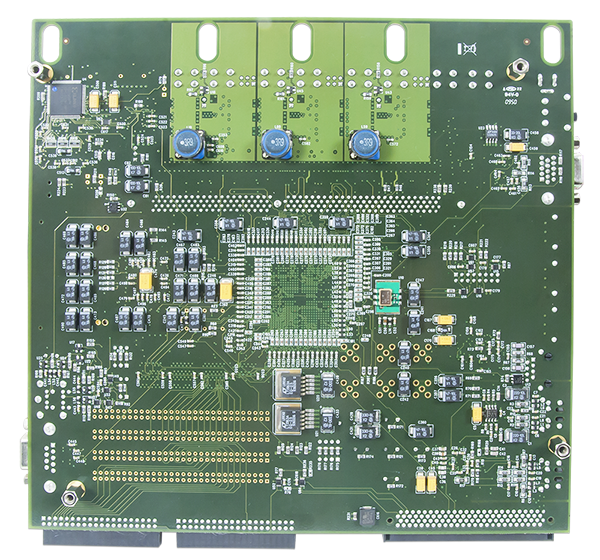Virtex-II Pro Reference Manual
Note
The Virtex-II Pro is retired and no longer for sale in our store.
The Virtex-II Pro (V2-Pro) development system can be used at virtually any level of the engineering curricula, from introductory courses through advanced research projects. Based on the Virtex-II Pro FPGA, the board can function as a digital design trainer, a microprocessor development system, or a host for embedded processor cores and complex digital systems. It is powerful enough to support advanced research projects, but affordable enough to be placed at every workstation. The expansion connectors can accommodate special-purpose circuits and systems for years to come, so the board can remain at the core of an engineering educational program indefinitely (see below for a current list of available expansion boards).
NOTE: EDK version 9.2 Base System Builder does not fully support the V2Pro board. We recommend using EDK Version 9.1 or the newer Version 10.1. The V2Pro is a mature product. 10.1 Service Pack 3 supports this product except for the 512MB DIMM. Future Xilinx EDK versions will not.
Features
- Virtex™-II Pro FPGA with PowerPC™ 405 cores
- Up to 2 GB of Double Data Rate (DDR) SDRAM
- System ACE™ controller and Type II CompactFlash™ connector for FPGA configuration and data storage
- Embedded Platform Cable USB configuration port
- High-speed SelectMAP FPGA configuration from Platform Flash In-System Programmable Configuration PROM
- Support for “Golden” and “User” FPGA configuration bitstreams
- On-board 10/100 Ethernet PHY device
- Silicon Serial Number for unique board identification
- RS-232 DB9 serial port
- Two PS-2 serial ports
- Four LEDs connected to Virtex-II Pro I/O pins
- Four switches connected to Virtex-II Pro I/O pins
- Five push buttons connected to Virtex-II Pro I/O pins
- Six expansion connectors joined to 80 Virtex-II Pro I/O pins with over-voltage protection
- High-speed expansion connector joined to 40 Virtex-II Pro I/O pins that can be used differentially or single ended
- AC-97 audio CODEC with audio amplifier and speaker/headphone output and line level output
- Microphone and line level audio input
- On-board XSGA output, up to 1200 x 1600 at 70 Hz refresh
- Three Serial ATA ports, two Host ports and one Target port
- Off-board expansion MGT link, with user-supplied clock
- 100 MHz system clock, 75 MHz SATA clock
- Provision for user-supplied clock
- On-board power supplies
- Power-on reset circuitry
- PowerPC 405 reset circuitry





